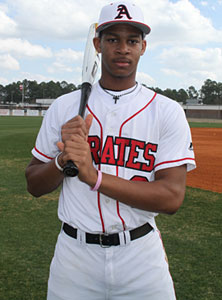So, yeah, the Titans took a shiny new quarterback with the second overall pick and I haven’t written a post specifically about him yet. Time for that to change.
What makes Marcus Mariota so fascinating a pick for the Titans is taking him is taking him was simultaneously part of the ideal and nightmare Titans draft scenarios. The nightmare scenario is Ken Whisenhunt taking a mobile spread quarterback who threw mostly short and intermediate passes and demanding he immediately turn into a pocket-only traditional dropback passer who throws more deep passes. The ideal scenario is, Mariota is a much better thrower and can use his legs intelligently to buy time, taking over only when it makes sense to do so, and we’ve seen Whisenhunt coordinate an offense in San Diego in 2013 that would match Mariota’s strengths well. I ended up going on record the Friday before the draft that if I ran the Titans I would take Mariota at #2.
One of the reasons I haven’t written a post about Mariota yet is that when I write here I generally try to say something I haven’t already read, to “advance the conversation” in some way, and I’m having a hard time doing that with Mariota. Not just because he’s been covered more than most Titans players (saying something you may not have read about Deon Long, to pick one of the UDFAs from yesterday? not that hard), but because the interesting questions about Mariota are ones that inherently cannot be answered until we see him on the field against an actual opponent.
Among all the pieces on Mariota, the one that best, maybe almost perfectly captures the uncertainty of the Mariota evaluation is Eric Stoner’s Marcus Mariota: The Task-Oriented QB. It’s a long piece, but one worth reading in detail and considering (I’ve read it multiple times and keep glancing over it when thinking about Mariota, though that may say more about my habits). Mariota was a proficient executor of Oregon’s spread attack. The college statistics are amazing. Yet, how much more than an executor was he? Eric’s piece includes breakdowns of how Mariota stuck with the play and the thought process of the play even when a more creative player would have found a much better solution. It’s easy to see Mariota the task executor as a very attractive prospect to Ken Whisenhunt, who seems to believe very strongly in the effectiveness of his system.
The question Whisenhunt and company should have answered before selecting him were (1) how well Mariota’s skills transfer to Whisenhunt’s system, and (2) how well Mariota will learn and execute a completely new system. (I’m going to ignore, for now, the effectiveness of the Whisenhunt system, the talent around Mariota and how it fits with him and the system, and what those say for how effective Mariota is likely to be in 2015, even though that’s basically the key issue for the 2015 Titans.) The former is the simpler question to answer. Mariota didn’t typically showcase the prototype super-strong arm like Roethlisberger or Warner or Anderson or … or Mettenberger, but he had a pretty good arm. I suspect the Titans really knocked Teddy Bridgewater last year because of his arm; Mariota doesn’t have the same questions, I don’t think, he’s just not clearly an A arm on tape (which for college players of course I mean “DraftBreakdown videos on YouTube,” but “tape” is one word and simpler).
The second question relates to the big imponderable, and is all about how Mariota takes in and processes information. That’s one of the big black boxes when it comes to evaluating prospects and, in some ways, even when they’re players playing the NFL. When the Titans chose Jake Locker four years ago I read it in part as a reaction to the Vince Young pick, that if Locker was going to fail he wasn’t going to fail in the same ways Young did. In some ways, he failed in his own way, but at the same time, we also learned that, like with VY, to Locker becoming a great quarterback wasn’t the be-all and end-all of his existence. Psychologically and for people in general, that’s healthy, but it’s not the right way to maximize your potential and skills as an NFL quarterback (or any other endeavor, for that matter). Media reports have been positive about Mariota and how he does things, but the jump to the NFL, in a new city, with a different group of teammates, in a much less structured in environment, new team, new coach, basically no choice in where you go or who you play with, is one that has screwed up many people who don’t have nearly the same public job, profile, and pressures as Mariota. These are common to all players, and indeed many people leaving college for their first professional environment, but they’re exacerbated and particularly important for him.
I wish I had answers to the most important questions about Marcus Mariota, his likely prospects for 2015, and the best course of his career. All I have to offer right now, though, are questions I can’t make progress on without more information.
Add The Sports Daily to your Google News Feed!
